Use of DNA in serial killer probe sparks privacy concerns
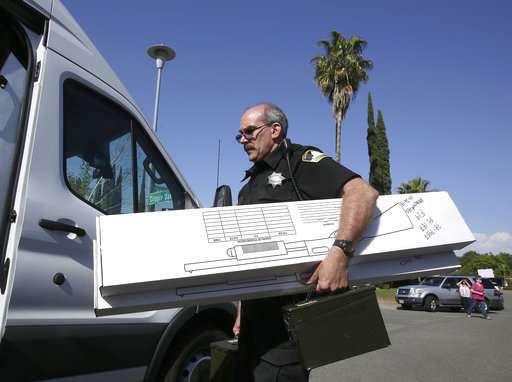
Investigators who used a genealogical website to find the ex-policeman they believe is a shadowy serial killer and rapist who terrified California decades ago call the technique ground-breaking.
But others say it raises troubling legal and privacy concerns for the millions of people who submit their DNA to such sites to discover their heritage.
There aren't strong privacy laws to keep police from trolling ancestry site databases, said Steve Mercer, the chief attorney for the forensic division of the Maryland Office of the Public Defender.
"People who submit DNA for ancestors testing are unwittingly becoming genetic informants on their innocent family," Mercer said, adding that they "have fewer privacy protections than convicted offenders whose DNA is contained in regulated databanks."
Joseph James DeAngelo, 72, was arrested Tuesday after investigators matched crime-scene DNA with genetic material stored by a distant relative on an online site. From there, they narrowed it down to the Sacramento-area grandfather using DNA obtained from material he'd discarded, Sacramento County District Attorney Anne Marie Schubert said.
Authorities declined to name the online site. However, two of the largest, Ancestry.com and 23andMe, said Thursday that they weren't involved in the case.
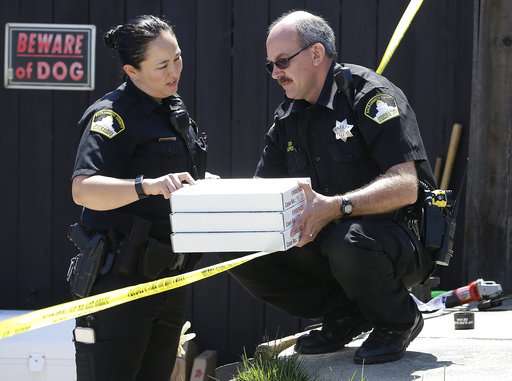
DNA potentially may have played an earlier role in the case. It was just coming into use as a criminal investigative tool in 1986 when the predator variously known as the East Area Rapist and the Golden State Killer apparently ended his decade-long wave of attacks.
DeAngelo, a former police officer, probably would have known about the new method, experts said.
"He knew police techniques," said John Jay College of Criminal Justice professor Louis Schlesinger. "He was smart."
No one who knew DeAngelo over the decades connected him with the string of at least a dozen murders, 50 rapes and dozens of burglaries from 1976 to 1986 throughout the state.
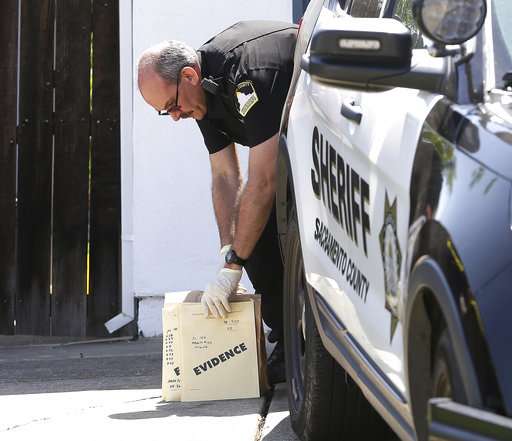
After he was identified as the suspect, however, prosecutors rushed to charge him with eight killings.
In addition, police in the central California farming town of Visalia said Thursday that DeAngelo is a suspect in a 13th killing and about 100 burglaries in the area.
In 1975, of community college teacher Claude Snelling was shot while trying to stop a masked intruder from kidnapping his 16-year-old daughter from his home.
Investigators lacked DNA evidence so Snelling's death and the burglaries weren't included in the tally of Golden State Killer crimes but fingerprints and shoe tracks will be reviewed for matches to DeAngelo, Visalia Police Chief Jason Salazar said.
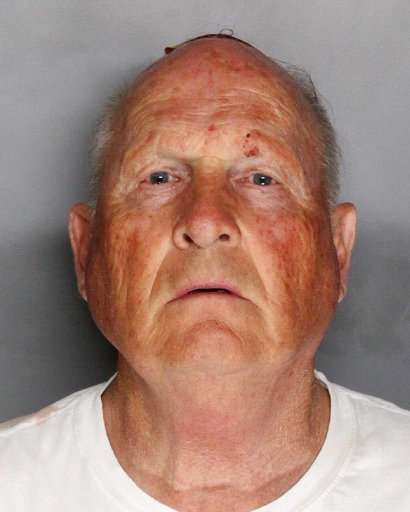
Investigators searched DeAngelo's home on Thursday, looking for class rings, earrings, dishes and other items that were taken from crime scenes as well as weapons.
Meanwhile, DeAngelo's neighbors, relatives and former acquaintances all say they had no inkling that he could be a serial killer. He worked nearly three decades in a Sacramento-area supermarket warehouse as a truck mechanic, retiring last year. As a neighbor, he was known for taking meticulous care of his lawn in suburban Citrus Heights.
DeAngelo worked as a police officer in the farming town of Exeter, not far from Visalia, from 1973 to 1976.
DeAngelo was a "black sheep" who didn't joke around with other officers, said Farrel Ward, 75, who served on the force with DeAngelo.
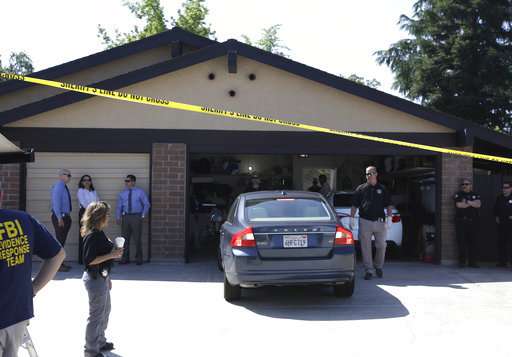
Ward said it's possible that DeAngelo helped with the search for Snelling's killer and the elusive burglar but he doesn't recall DeAngelo directly investigating the killing.
"I've been thinking, but there's no indication whatsoever that anything was wrong," Ward said. "How could you just go out and kill somebody and go back and go to work? I don't understand that."
Later, DeAngelo joined the Auburn Police Department outside of Sacramento but was fired in 1979 after he was caught shoplifting a hammer and dog repellant.
Investigators say they have linked DeAngelo to 11 killings that occurred after he was fired.
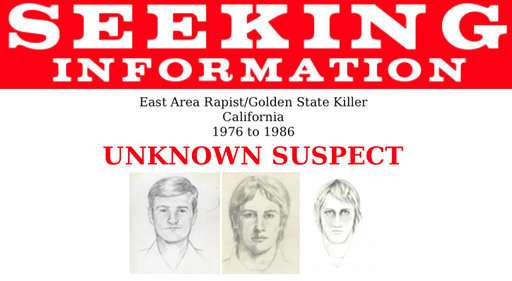
James Huddle said he always hoped police would catch the killer whose attacks prompted him to buy a pistol.
But he was stunned to find out the man arrested was DeAngelo, his former brother-in-law.
Huddle said it was "still just going crazy in my mind."
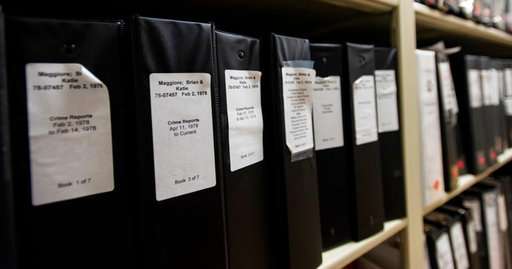
A look at DNA testing that ID'd a suspected serial killer
Joseph James DeAngelo, who authorities suspect is the so-called Golden State Killer responsible for at least a dozen murders and 50 rapes in the 1970s and 80s, was arrested more than three decades after the last killing with the help of information from an online genealogical site. Investigators haven't disclosed many key elements about how and why they took this very unusual step to find a suspect.
Here's a look at the case and some of the questions surrounding it:
HOW DID AUTHORITIES IDENTIFY HIM?
The Sacramento County district attorney's office said Thursday DNA from one of the crime scenes was checked against genetic profiles from genealogical websites that collect DNA samples to help people learn about their family backgrounds.
Authorities zeroed in on DeAngelo after determining one of his relatives whose genetic information was on the site was a familial match for the DNA from the crime scene.
They then set up surveillance at DeAngelo's home in Citrus Heights, California, just outside Sacramento and collected two "discarded DNA samples" from him. One didn't contain enough DNA but the other tied him to the DNA evidence.
Authorities did not identify the DNA websites that were used.
___
IS THAT LEGAL?
Ancestry.com and 23andMe, two of the largest companies that produce genetic profiles for customers who provide DNA samples, say they don't cooperate with law enforcement unless they receive a court order.
Both said Thursday they did not receive a court order in the DeAngelo case and were not otherwise involved.
Ancestry.com has said it hasn't received any such requests for genetic information in the last three years.
A 23andMe spokesman said the company "has never given customer information to law enforcement officials" and that their platform doesn't allow for the comparison of genetic data that was processed by any third party.
___
HAS THIS EVER BEEN DONE BEFORE?
The issue of law enforcement comparing DNA to samples in genealogical databases garnered national attention several years ago when a New Orleans filmmaker was identified in an Idaho murder based on a DNA sample that his father had given years earlier.
As part of a church-sponsored genealogy project, the man's father had provided his DNA, which was later sold to Ancestry.com.
The company was required to identify the man to police after receiving a court order. But he was eventually cleared after his DNA didn't match the evidence at the crime scene.
___
WHAT IS THE DNA TEST THAT INVESTIGATORS USED IN THAT CASE?
The technique is known as familial DNA testing and it has raised ethical issues in the forensics community. Typically with the method, investigators search law enforcement databases to identify likely relatives of the person who may have committed the crime.
Critics say that familial DNA testing allows for searches of innocent people who happen to be related to someone suspected of committing a crime or otherwise provided their DNA for inclusion in a database. Law enforcement officials have argued the technique can provide investigators with valuable leads.
In 2008, California became the first state in the country to authorize the testing. It since has been used in at least eight other states.
The method led to the arrest of Lonnie Franklin Jr. in the Los Angeles "Grim Sleeper" serial killings from 1985 to 2007. Los Angeles County sheriff's officials also used it last year to solve the decades-old killing of the ex-wife of Righteous Brothers singer Bill Medley.
-
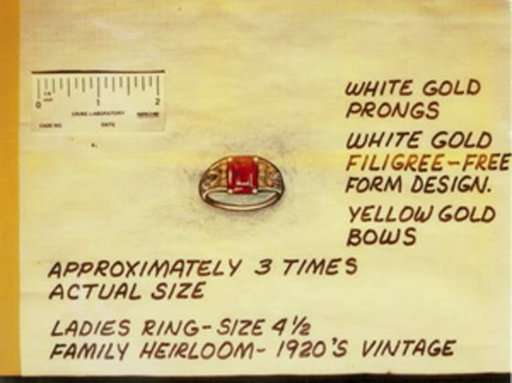
This undated photo released by the FBI shows a sketch and details of a stolen ring the attacker who became known as the East Area Rapist took from one of his victims. Authorities said the attacker ransacked homes and took coins, jewelry and identification. Joseph James DeAngelo, once sworn to protect the public from crime, was accused Wednesday, April 25, 2018, of living a double life terrorizing suburban neighborhoods at night, becoming one of California's most feared serial killers and rapists in the 1970s and '80s before leaving a cold trail that baffled investigators for more than three decades. (FBI via AP) -
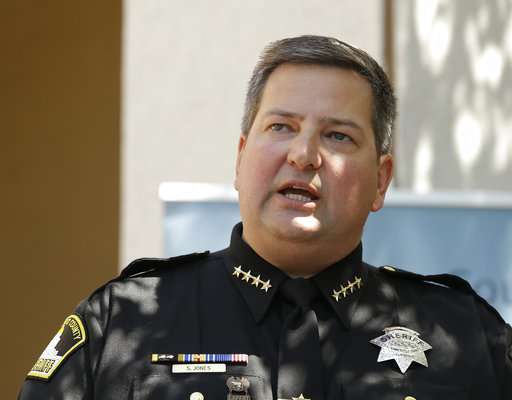
Sacramento County Sheriff Scott Jones discusses the arrest of Joseph James DeAngelo for a string of violent crimes in the 1970's and 1980's, at a news conference, Wednesday, April 25, 2018, in Sacramento, Calif. DeAngelo, 72, was taken into custody at his suburban Sacramento home, Tuesday, on suspicion of committing at least 12 slayings and 45 rapes in California.(AP Photo/Rich Pedroncelli) -
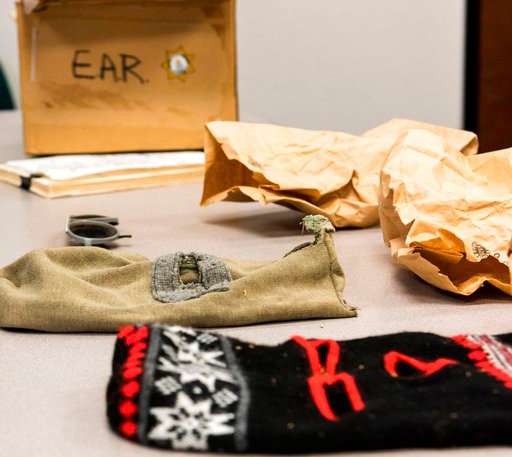
In this undated photo released by the FBI shows East Area Rapist Ski Masks in Sacramento, Calif. A California sheriff says a former police officer accused of being a serial killer and rapist was taken by surprise when deputies swooped in and arrested him as he stepped out of his home. Sacramento County Sheriff Scott Jones said deputies planned to arrest Joseph DeAngelo when he left his home on Tuesday, April 24, 2018. (FBI via AP) -
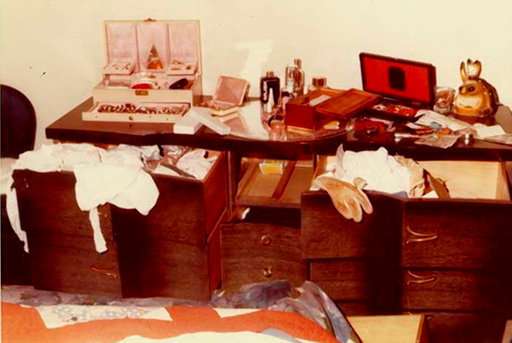
This undated photo released by the FBI shows a home invasion ransacking by an attacker who became known as the "East Area Rapist" at an unknown location in California. Authorities said the attacker ransacked the home and took coins, jewelry and identification. Joseph James DeAngelo, once sworn to protect the public from crime, was accused Wednesday, April 25, 2018, of living a double life terrorizing suburban neighborhoods at night, becoming one of California's most feared serial killers and rapists in the 1970s and '80s before leaving a cold trail that baffled investigators for more than three decades. (FBI via AP) -
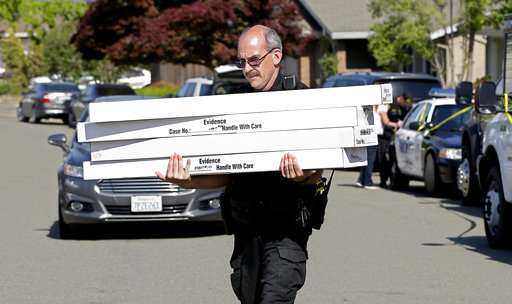
John Lopes, a crime scene investigator for the Sacramento County Sheriff's office, carries boxes of evidence taken from the home of murder suspect Joseph DeAngelo to a sheriff's vehicle Thursday, April 26, 2018, in Citrus Heights, Calif. DeAngelo, 72, was taken into custody Tuesday on suspicion of committing multiple homicides and rapes in the 1970s and 1980s in California. Authorities spent the day going through the home for evidence. (AP Photo/Rich Pedroncelli) -
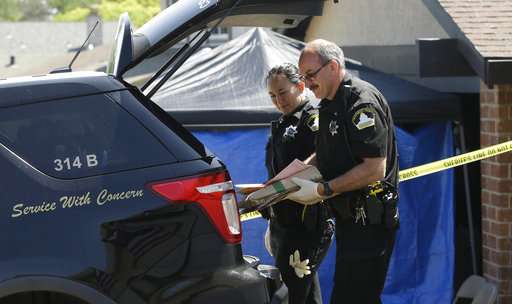
Sacramento Sheriff's deputies carry evidence taken from the home of suspect Joseph DeAngelo to a sheriff's vehicle Thursday, April 26, 2018, in Citrus Heights, Calif. DeAngelo was taken into custody, Tuesday, on suspicion of committing multiple slayings and dozens of rapes in the 1970's and 1980's in California. (AP Photo/Rich Pedroncelli)
© 2018 The Associated Press. All rights reserved.

















